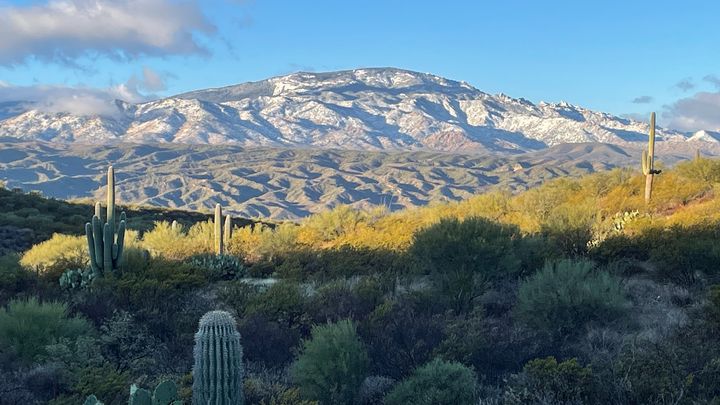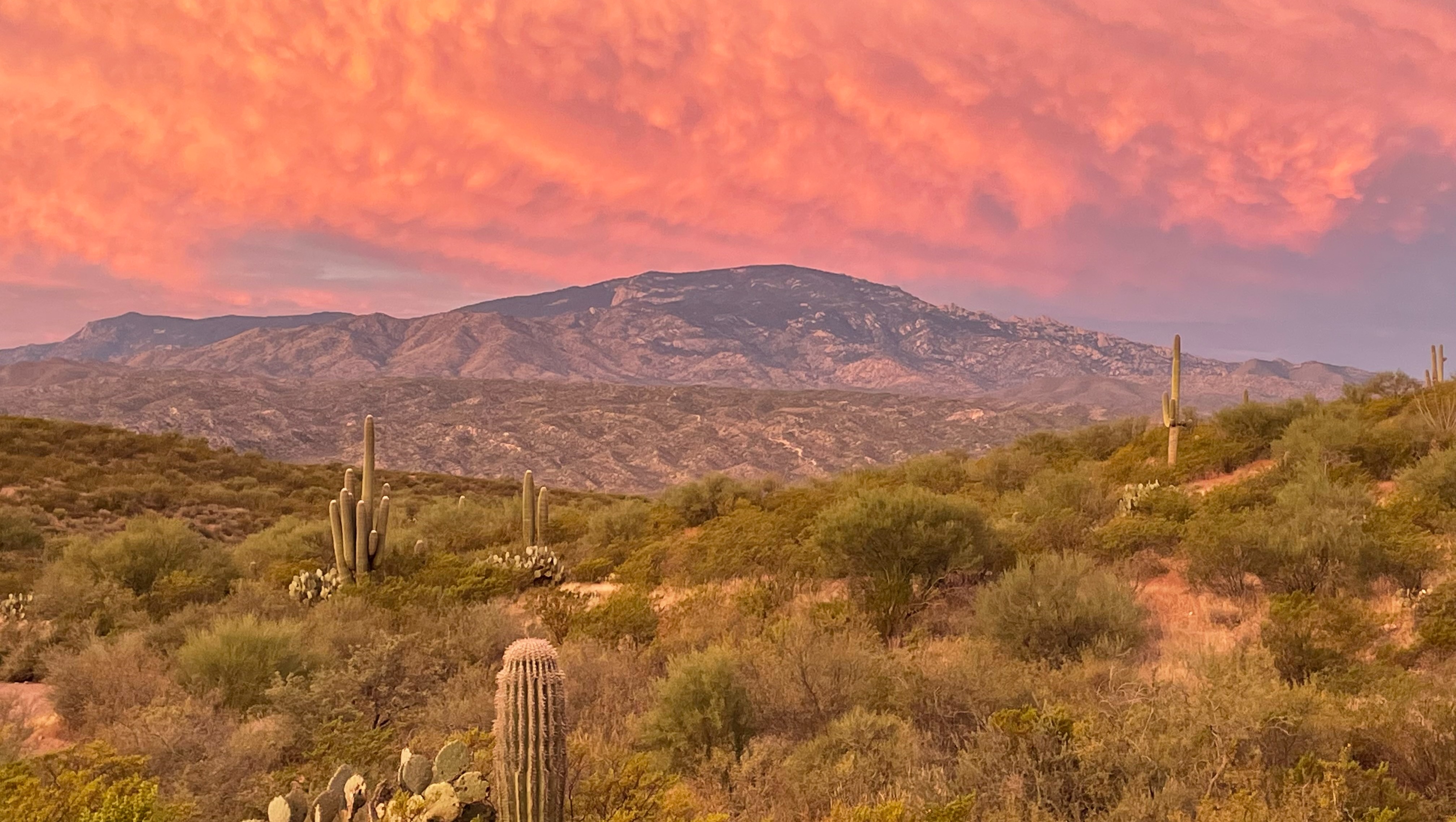
Protect the San Pedro River Valley
Tax deductible
**(Look below this text in the "Updates" section to see our most recent news!!)**
The Middle San Pedro River Valley is Arizona's largest unfragmented ecosystem after Grand Canyon National Park. Without your help, this integral watershed and wildlife corridor will be forever marred by transmission lines and the extensive biodiversity of this area will be fragmented and spoiled for corporate gain.
Pattern Energy, the corporate developer of the SunZia transmission project that is already approved to cross this ecosystem, wants us to believe that this giant new power line is necessary for a clean energy transition. We do not need to make this irresponsible false choice between renewable energy development and protecting our last remaining major wildlife-supporting landscapes. For over 15 years, everyday people have been fighting against SunZia and protecting the San Pedro River Valley. Now at this critical moment, we need your help!
We're raising funds to support a legal battle with the Arizona Corporation Commission (ACC), which has approved this poorly planned powerline corridor through the middle San Pedro River Valley.
This video introduces some of the flora and fauna that call the San Pedro River Watershed home. It shows how water brings this otherwise arid region to life.
The San Pedro River is the last undammed, free-flowing river in the state of Arizona and the entire Southwest region. This river provides critical habitat to over 400 species of migrating birds, 80 species of mammals, 40 species of reptiles and amphibians, and several endangered native fish species. The American Bird Conservancy recognized the San Pedro as its first "globally important bird area" In the United States, stating that it is "the largest and best example of riparian woodland remaining" in the Southwest. In addition, archeologists have found evidence that humans have been occupying this area for at least 11,000 years. There are numerous cultural sites in the area, some of which have not yet been researched or cataloged.
The middle San Pedro River Valley has so far remained intact and untouched by large-scale development but is now threatened by the SunZia Transmission Project, which would cut 33 miles of new powerline corridor through the heart of this precious ecosystem.

This is the route that the proposed line would follow. The image you are looking at includes a National Park, a National Wilderness area, the highest biodiversity in the United States, and what the Nature Conservancy has called one of the 10 Last Great Places in America. Imagine two parallel rows of 200’ tall towers traversing this major wildlife corridor between Saguaro National Park and the Galiuro Wilderness.
This stop-motion video was made by a Cascabel, AZ resident, who walked the 33-mile stretch of the slated power line corridor taking photos every 20-30 feet. It shows what would be lost if the SunZia project comes to fruition.
The SunZia Transmission Project was first introduced in 2006, primarily to serve a co-owned fossil-fueled generation plant in Bowie, Arizona. The purpose was shifted in 2008 by SunZia to also provide transmission capacity for renewable energy generation in both New Mexico and Arizona. However, the purpose recently shifted again to almost exclusively bring wind energy from Central New Mexico to Central Arizona where it would likely be sold to energy markets in California, but still insisting on a route through Bowie, Arizona. Since 2009, residents and conservation organizations in the San Pedro River Valley have spent thousands of hours fighting to keep this project out of the area, but their efforts and concerns have been ignored by the ACC.
Since the conception of this project, Peter Else, a resident of Mammoth, AZ, has been attending all of the SunZia hearings, raising valid arguments against the proposed route and demanding that the Arizona Corporation Commission follow its own rules and regulations. At the last hearing in November, despite major changes to the project, the ACC approved the Certificate of Environmental Compatibility for the SunZia Transmission Project. The changes that SunZia made should have warranted two entirely new Certificates of Environmental Compatibility, and the ACC should have required more evidence about whether or not this project will benefit Arizona in the ways claimed by the owners during past hearings. The ACC is required to balance electricity benefits for Arizona with environmental impacts in Arizona, but the alleged purpose of the project and claimed benefits have once again changed significantly. There are obvious alternative routes that the transmission lines could take that would follow existing development and infrastructure, but these have not been seriously considered by SunZia because they would not pass near their planned and co-owned generation plant in Bowie, Arizona and would now require more permitting. If any of this sounds irresponsible, it is!
It is on these legal discrepancies that Peter Else has volunteered to be a legal intervenor for this case. In December 2022, Else hired two attorneys from the highly reputable Phoenix law firm Tully Bailey LLC. Lead attorney Ilan Wurman is one of the most knowledgeable administrative law attorneys in the country. He is a professor of administrative and constitutional law at the Sandra Day O’Connor College of Law at Arizona State University and has written numerous books on administrative and constitutional law. Steve Tully is a founding partner of the Tully Bailey law firm. He has practiced law for over 30 years and regularly handles appeals and argues before the Ninth Circuit Court of Appeals, the Arizona Supreme Court, and the Arizona Court of Appeals.
On December 12, 2022, Tully Bailey submitted an Application for Rehearing to the ACC. The application was ignored by the ACC and on January 26, 2023, Else and his attorneys filed a complaint to the Arizona Superior Court. There are many twists and turns that this legal struggle could take, but we are determined to see it through, no matter the time or the cost. The Lower San Pedro Watershed Alliance and people involved in the conservation community of the Middle San Pedro have fundraised $70,000 to cover the legal fees thus far. But now we need your help!
Our goal is not to stop this project completely or to stand in the way of renewable energy. Our goal is to protect one of the last remaining desert riparian ecosystems in the United States. Biodiversity provides the planet and humanity with resilience. In these tumultuous times of climate crisis, we need to do everything in our power to conserve what little biodiversity we have left, not only in our self-interest but for the generations to come. We do not need to make this false choice between energy development and protecting our last remaining major wildlife-supporting landscapes.
In defense of land, water, plants, animals, and our global community we invite you to donate or share this cause.
In solidarity,
Stewards of the Middle San Pedro

~~~~
If you'd like to learn more about the people and organizations who have been protecting and stewarding the Middle San Pedro, please visit the Cascabel Conservation Association and the Cascabel Working Group websites. Additionally, you can check out the Protect the San Pedro website website that has updates, information, and more.
Here is a list of links to learn more about the San Pedro River Valley and why it's important:
-San Pedro River Valley: This has extensive information about the hydrology, geology, and ecology of the San Pedro River
If you have any questions, email them to
wildsanpedroriver @ cascabelconservation . org
Organizer
Cascabel Conservation Association
Organizer
Benson, AZ
Cascabel Conservation Association
Beneficiary